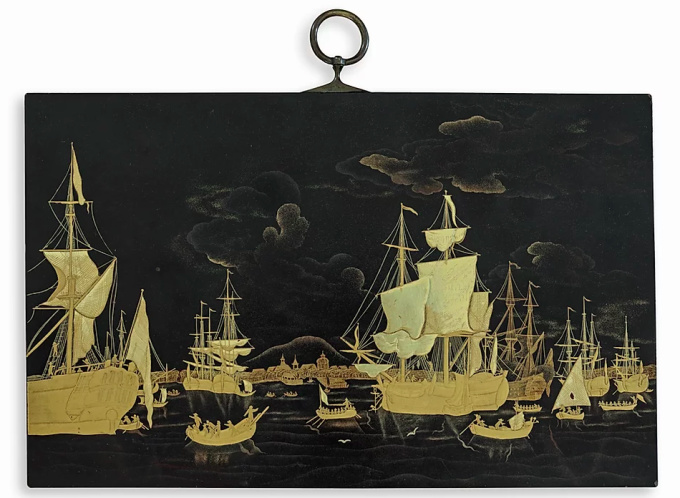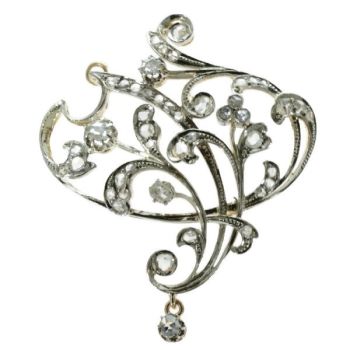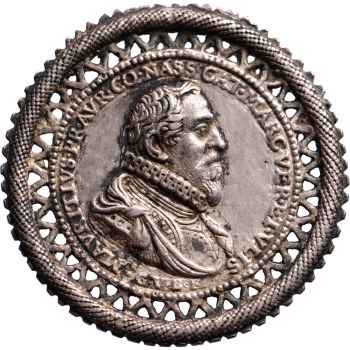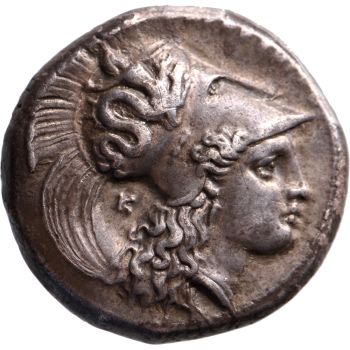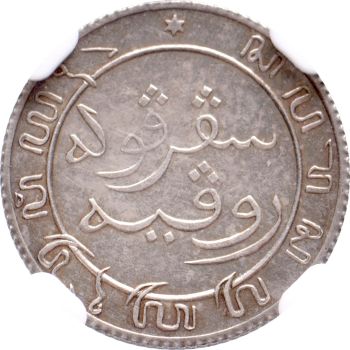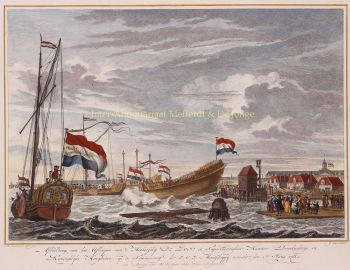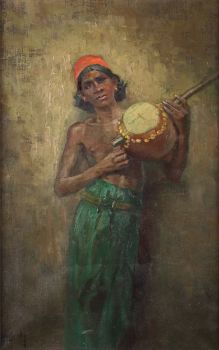UNA PLACA DE LACA JAPONESA QUE REPRESENTA EL CAMINO DE BATAVIA POR 'LAKWERKER SASAYA' 1780 - 1820
Artista Desconocido
Actualmente no disponible a través de Gallerease
Zebregs & Röell - Fine Art - Antiques
- Sobre la obra de arteA JAPANESE LACQUER PLAQUE DEPICTING THE ROADSTEAD OF BATAVIA BY 'LAKWERKER SASAYA'
By “LAKWERKER SASAYA” (act. circa 1780-1820), Nagasaki, Edo period circa 1800
At the reverse an inscription reading: De Reede van Batavia with the coat of arms of the town Batavia, a sword with a laurel wreath, amidst banners, cannons, nautical instruments and a Dutch lion holding a spear topped by a “liberty-cap”.
With a label at the reverse reading: “Tegen het eind van de 18e eeuw trad ene Van Reede op als gouverneur van de VOC te Decima. Hij liet een aantal plaquettes vervaardigen naar voorbeeld van uit Holland meegebrachte gravures” (towards the end of the 18th century Van Reede was head of the VOC at Decima. He ordered several plaques after Dutch prints he had taken to Nagasaki).
Black lacquer on copper, decorated and inscribed in gold and silver, hiramaki-e, togidashi and sparse mura-nashiji.
H. 17.5 x W. 28 cm
Note:
This scene with Dutch ships at anchor on the roadstead of Batavia was copied after an engraving by Mattias de Sallieth, after a drawing by Hendrik Kobell (1751-1799) and published in Batavia, de hoofdstad van Nederlands Oost-Indië, 1782-1783. In Uit Verre Streken June 2011, item 2, a Japanese lacquered writing box is illustrated with the same scene and also inscribed “DE REEDE VAN BATAVIA” (roadstead of Batavia), in an oval with the arms of Batavia underneath, after the same engraving based on a drawing by Hendrik Kobell, as was used for the present plaque. The interior of the box is fitted with compartments for writing implements and a glass inkwell, beneath a hinged cover inscribed “ LAKWERKER SASAYA”. So SASAYA certainly possessed the engraving of the roadstead of Batavia which was used for the present lacquer plaque, as well as for the writing box, suggesting that the present plaque is also by his hand. Sofar only four other pieces with Sasaya’s mark were known, a lacquer plaque depicting the sea battle on Doggersbank (Rijksmuseum Amsterdam, inv. NM 6309), a scene in ancient Rome (Rijksmuseum Amsterdam, inv. RBK 1960-29), both dated 1792, and a pair of secrétaires, one depicting the landing of British troops in Holland in 1799 (Rijksmuseum Amsterdam, inv, NG 401) and the other representing the sea- battle of Kamperduin of 1797 (Maritime Museum Prins Hendrik Rotterdam, inv. M 1913), both inscribed “LAKWERKER SASAYA” in an oval inside the lid.
Recently we found two very similar secrétaires both signed on the same place inside the lid LAKWERKER SASAYA, one inscribed on the front with the name “Olivia”. According to Oliver Impey & Christiaan Jörg, Japanese export lacquer 1580-1850, Amsterdam, 2005, p.53-57 and 266-267, the figure of Sasaya remains elusive. It is not clear from the existing records whether Sasaya was an individual lacquer worker, a representative of a workshop, a wholesaler or a merchant. Besides, the name Sasaya was not uncommon and appeared in the Dutch “Dagregisters” (journal) of Decima as early as 1776. - Sobre el artista
Puede suceder que un artista o creador sea desconocido.
Algunas obras no deben determinarse por quién está hecho o por (un grupo de) artesanos. Algunos ejemplos son estatuas de la Antigüedad, muebles, espejos o firmas que no son claras o legibles, pero también algunas obras no están firmadas en absoluto.
También puedes encontrar la siguiente descripción:
•"Atribuido a …." En su opinión, probablemente una obra del artista, al menos en parte.
•“Estudio de….” o “Taller de” En su opinión, una obra ejecutada en el estudio o taller del artista, posiblemente bajo su supervisión
•“Círculo de…” En su opinión, una obra del período del artista que muestra su influencia, estrechamente asociado con el artista pero no necesariamente su alumno.
•"Estilo de …." o “Seguidor de…”. En su opinión, una obra ejecutada al estilo del artista pero no necesariamente por un alumno; puede ser contemporáneo o casi contemporáneo
•"Manera de …." En su opinión una obra al estilo del artista pero de fecha posterior
•"Después …." En su opinión, una copia (de cualquier fecha) de una obra del artista
•“Firmado…”, “Fechado…” o “Inscrito” En su opinión, la obra ha sido firmada/fechada/inscrita por el artista. La adición de un signo de interrogación indica un elemento de duda.
•“Con firma…”, “Con fecha…”, “Con inscripción…” o “Lleva firma/fecha/inscripción” en su opinión la firma/fecha/inscripción ha sido añadida por alguien que no es el artista
¿Está interesado en comprar esta obra de arte?
Artwork details
Related artworks
- 1 - 4 / 12
Artista Desconocido
A rare Japanese export lacquer medical instrument box1650 - 1700
Precio a consultarZebregs & Röell - Fine Art - Antiques
Artista Desconocido
UN NETSUKE DE MARFIL DE UN HOLANDÉS CON UNA COCKEREL18th century
Precio a consultarZebregs & Röell - Fine Art - Antiques
Artista Desconocido
UN PEQUEÑO NETSUKE DE MARFIL DE UN HOLANDÉS CON UN TAMBOR1750 - 1800
Precio a consultarZebregs & Röell - Fine Art - Antiques
Artista Desconocido
UN NETSUKE MARINE MARFIL DE UN HOLANDÉS CON UN VENTILADOR CHINO18th century
Precio a consultarZebregs & Röell - Fine Art - Antiques
Artista Desconocido
UN RARO TELESCOPIO DE CUERO LACADO JAPONÉS GRANDE1750 - 1800
Precio a consultarZebregs & Röell - Fine Art - Antiques
Artista Desconocido
The Stamford Raffles Secretaires.1800 - 1813
Precio a consultarZebregs & Röell - Fine Art - Antiques
1 - 4 / 20Artista Desconocido
UN MODELO JAPONÉS DE UN NORIMONO, UN PALANQUÍN1650 - 1700
Precio a consultarZebregs & Röell - Fine Art - Antiques
Artista Desconocido
UNA COLECCIÓN DE CUATRO CAJAS BÍBLICAS DE MARFIL DE SRI LANKAN18th century
Precio a consultarZebregs & Röell - Fine Art - Antiques
Artista Desconocido
UN RARO TELESCOPIO DE CUERO LACADO JAPONÉS GRANDE1750 - 1800
Precio a consultarZebregs & Röell - Fine Art - Antiques
Artista Desconocido
UN PEQUEÑO NETSUKE DE MARFIL DE UN HOLANDÉS CON UN TAMBOR1750 - 1800
Precio a consultarZebregs & Röell - Fine Art - Antiques
Artista Desconocido
UN NETSUKE MARINE MARFIL DE UN HOLANDÉS CON UN VENTILADOR CHINO18th century
Precio a consultarZebregs & Röell - Fine Art - Antiques
Artista Desconocido
The Stamford Raffles Secretaires.1800 - 1813
Precio a consultarZebregs & Röell - Fine Art - Antiques
Artista Desconocido
PAREJA DE ANTORCHAS O VELAS DE TECA DORADA Y LACADA INDONESIA18th century
Precio a consultarZebregs & Röell - Fine Art - Antiques
Artista Desconocido
UN NETSUKE DE MARFIL DE UN HOLANDÉS CON UNA COCKEREL18th century
Precio a consultarZebregs & Röell - Fine Art - Antiques
1 - 4 / 24Artista Desconocido
UN MODELO JAPONÉS DE UN NORIMONO, UN PALANQUÍN1650 - 1700
Precio a consultarZebregs & Röell - Fine Art - Antiques
Artista Desconocido
Holandeses en miniatura18th century
Precio a consultarZebregs & Röell - Fine Art - Antiques
Artista Desconocido
UN INUSUAL PLATO DE PLATA CON LOBBED INDONESIOlate 17th
Precio a consultarZebregs & Röell - Fine Art - Antiques
Artista Desconocido
The bell of the VOC fortress in Jaffna, Sri Lanka1747
Precio a consultarZebregs & Röell - Fine Art - Antiques
 curada por
curada porDanny Bree
Artista Desconocido
PAREJA DE ANTORCHAS O VELAS DE TECA DORADA Y LACADA INDONESIA18th century
Precio a consultarZebregs & Röell - Fine Art - Antiques
1 - 4 / 24Artista Desconocido
IMPORTANTE Y RARO PINTURA INDIA DE ESTILO DE COMPAÑÍA EN MARFIL QUE REPRESENTA UN DESFILE1850 - 1900
Precio a consultarZebregs & Röell - Fine Art - Antiques
 curada por
curada porDanny Bree
Artista Desconocido
A large Japanese Imari porcelain 'VOC Groningen' dish1800 - 1925
Precio a consultarZebregs & Röell - Fine Art - Antiques
Paulus Franciscus Kromjong
Flores frente a Arearea Aka (alegría) por Gauguin '20th century
Precio a consultarZebregs & Röell - Fine Art - Antiques
HUGO VILFRED VON PEDERSEN
Gadesanger fra Singapore (Musician from Singapore)1870 - 1959
Precio a consultarZebregs & Röell - Fine Art - Antiques
Artista Desconocido
A silver spoon commemorating Juff’ Margareta van Hoorn1656 - 1694
Precio a consultarZebregs & Röell - Fine Art - Antiques
1 - 4 / 12

